TechRadar Verdict
Used by over 300 million meeting participants everyday, Zoom is a powerful video conferencing app that has an intuitive UI, simple setup, and advanced features. A well-deserved industry favourite.
Pros
- +
Host up to 1,000 participants
- +
Local and cloud recording
- +
Admin controls on business plans
- +
Well-established brand and company
Cons
- -
Advanced security disables some features
- -
Security settings aren’t maximized by default
Why you can trust TechRadar
Zoom established itself as one of the best video conferencing options on the market, to the extent that a Google Search lands you several articles about it becoming so popular that it’s now used as a verb, thanks partly to its huge success during the pandemic
To date, Zoom now hosts over 300 million daily meeting participants and has added a ton of features to cement its place among the best video conferencing and best VoIP services for most businesses.
New features like direct messaging, HD audio and video, built-in collaboration tools, an AI companion, and more have taken the app to the next level, as we'll discover in more detail later on.
In this Zoom review, we go over several aspects of the software, including its plans and pricing, main features, customer support, and security, to help you determine whether it’s right for you.
We'll also take a look at its competitors in the VoIP space, like RingCentral, 8x8, GoTo Connect, and Aircall. TechRadar Pro recommends that businesses every size check out all of the options to make the most informed choice.
Zoom: Plans and pricing
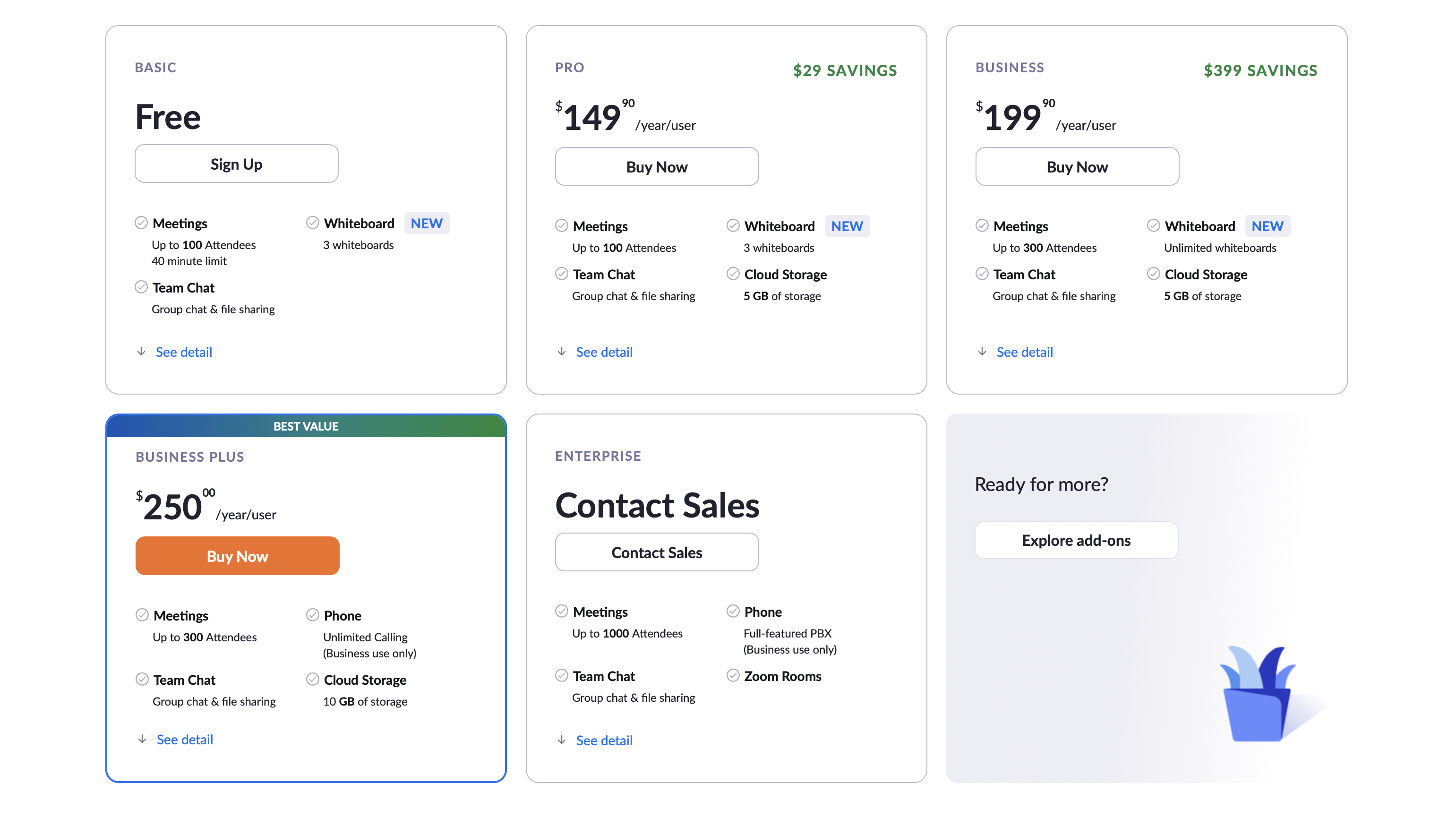
Zoom offers four plans, and the pricing per plan is for a single license. To host meetings simultaneously, you’ll need more than one license, so bear that in mind.
The free plan (or Basic plan) offers up to 100 participants, but has a 40-minute time limit on group meetings. One-to-one meetings, however, are unlimited.
Sign up to the TechRadar Pro newsletter to get all the top news, opinion, features and guidance your business needs to succeed!
Compared with other paid video conferencing suites, being able to communicate with so many people at once for no cost is great, but there are plenty of free alternatives like FaceTime for personal users and Google Meet for personal and business users, which are a little less limiting.
The Pro plan costs $149.90 (or £119) per year, and gives you the ability to host 100 participants, stream on social media, 5GB of cloud storage for recordings (up from 1GB previously), and real-time transcription. There’s also support for three whiteboards, which is great for collaboration, however they must be under 25MB.
The Business plan removes the limits on whiteboards and offers greater control for companies with regards to branding and single sign-on (SSO), which is usually the reserve of more expensive plans. Business costs $199 (or £159) per user per year, but at least 10 users are required for this type of membership.
On the high end, Business Plus doubles the recording storage to 10GB and adds Zoom Phone integration with unlimited regional calling for $250 (or £185) per user per year, something only a select few businesses might need.
Some businesses will prefer to pay for their subscriptions on a monthly basis, which is available on all plans, however the 17% saving for annual commitments is sadly lost. The above plans come under the Zoom One family.
Zoom also offers subscriptions for its Phone, Events & Webinars, Rooms, Contact Center, and new Whiteboard.
Zoom: Features
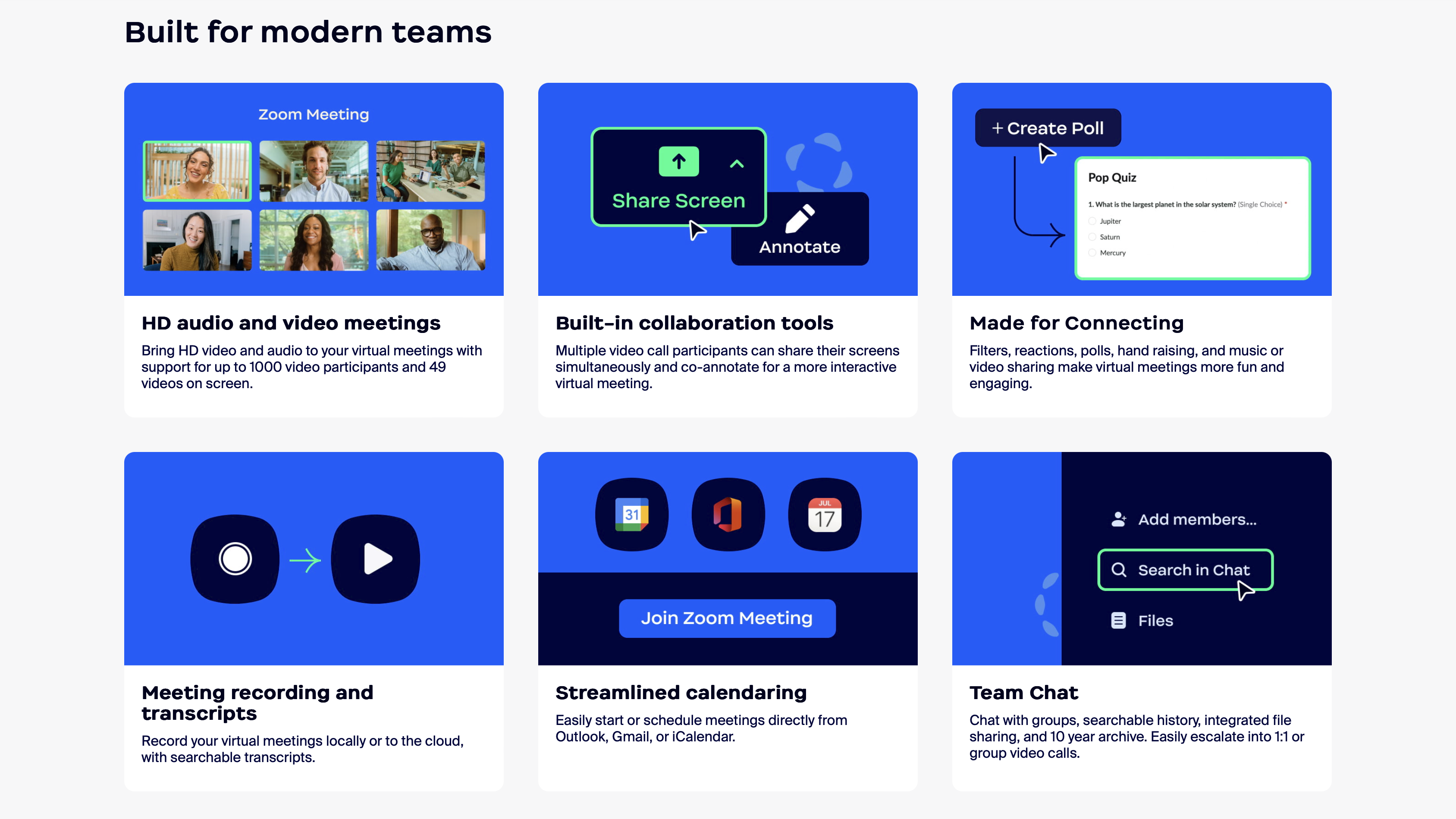
Zoom is a powerhouse of features: HD video and audio calling, social media streaming, screen sharing, integration with essential apps, and much more.
Let’s look at some of the most important.
All of Zoom’s plans enable local meeting recordings, and there’s cloud recording on all the paid plans, with Enterprise offering unlimited cloud storage (though you’ll need to get in touch with the sales department). Because all other plans come with a fairly limited space for storing video recordings, you business might be better off paying for cloud storage elsewhere and exporting your files to that provider.
Audio transcription is available on the higher plans to transcribe the audio of cloud-recorded meeting files, so you can focus on the meeting rather than worry about note-taking. You can also display the transcript in a video, like captions.
Live audio transcription, which creates a real-time transcript of the audio while the meeting is ongoing, has also been rolled out across all plans including the free tier, however language support is pretty limited. At launch, it only supported English, however plenty of other languages will likely be added.
Zoom was one of the first companies to bring virtual backgrounds to the spotlight, and although it cannot be credited to be the first, it deserves credit for the scope available. Users can pick pictures and videos of their own, or from Zoom’s small library, as well as use a less intrusive background blur.
Zoom suppresses distracting background noises to give you a focused experience. You can adjust the noise cancellation depending on your environment. On the low setting, it’ll suppress faint background noises. On the high setting, it’ll clear louder sounds, like keyboard typing or a dog barking.
Much like RingCentral’s AI background noise cancellation feature, and indeed sound-cancelling headphones like AirPods Pro, the technology is still fairly new and does not claim to fully cancel out sounds. With background and sound blurring, Zoom does do a respectable job at highlighting its subject.
With the advanced plans, you can use the admin portal to track meetings and participants, receive usage insights, and manage all your company’s users on one account for simplified billing.
Zoom: User interface
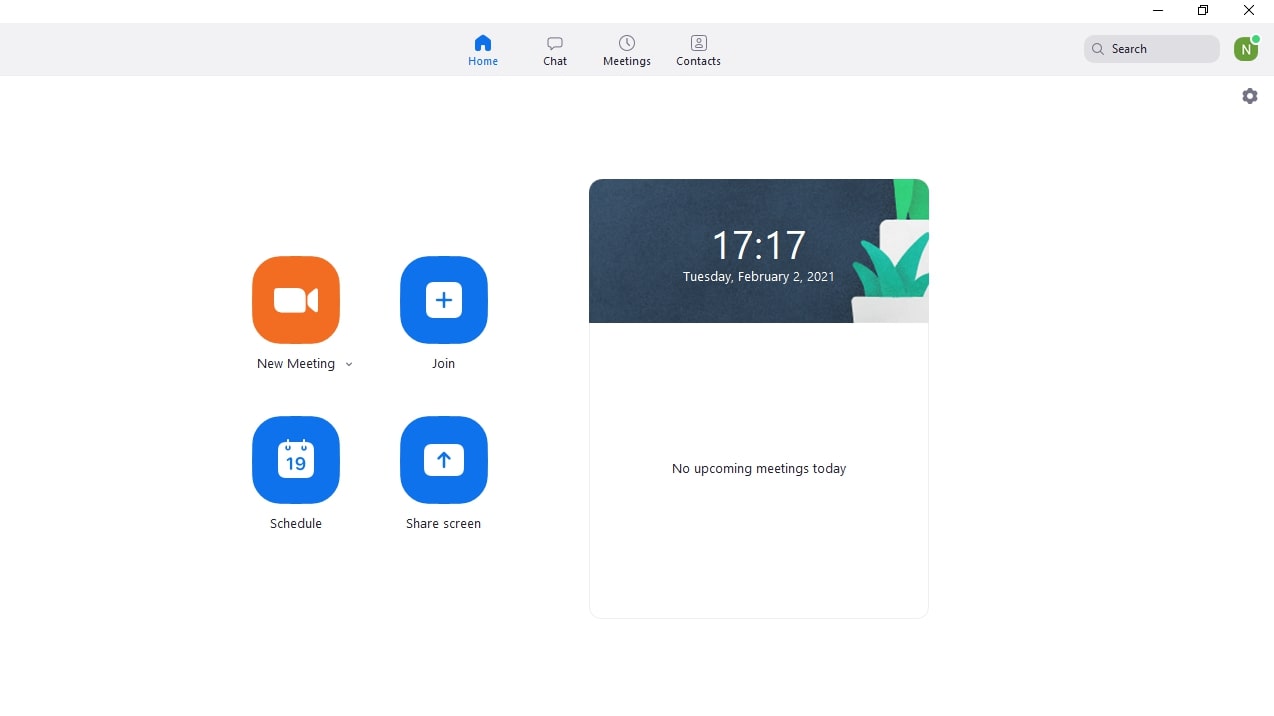
Zoom has a neat, uniform UI on both the mobile and desktop app.
The home screen has four large icons to fulfill all your meeting needs: New Meeting, Join, Schedule, and Share Screen. You can use Zoom on the browser, but that lacks some features like meeting recording.
Downloading the desktop client for macOS or Windows takes a few minutes and doesn’t have any restrictions.
With a strong internet connection, audio and video relaying were smooth. Zoom’s latest version is well optimized and used around 15–20% CPU on a 2.20 GHz 4-Core Intel Core i7 device. This is a tremendous upgrade, considering the application used around 50% CPU in 2020 on devices with similar specs.
On a Mac with an M1 chip, CPU usage still seemed to be at around 50% on our latest tests, which is disappointing considering the improvements that have been seen elsewhere. Later M-series chips are likely to improve performance, however.
Zoom: Support
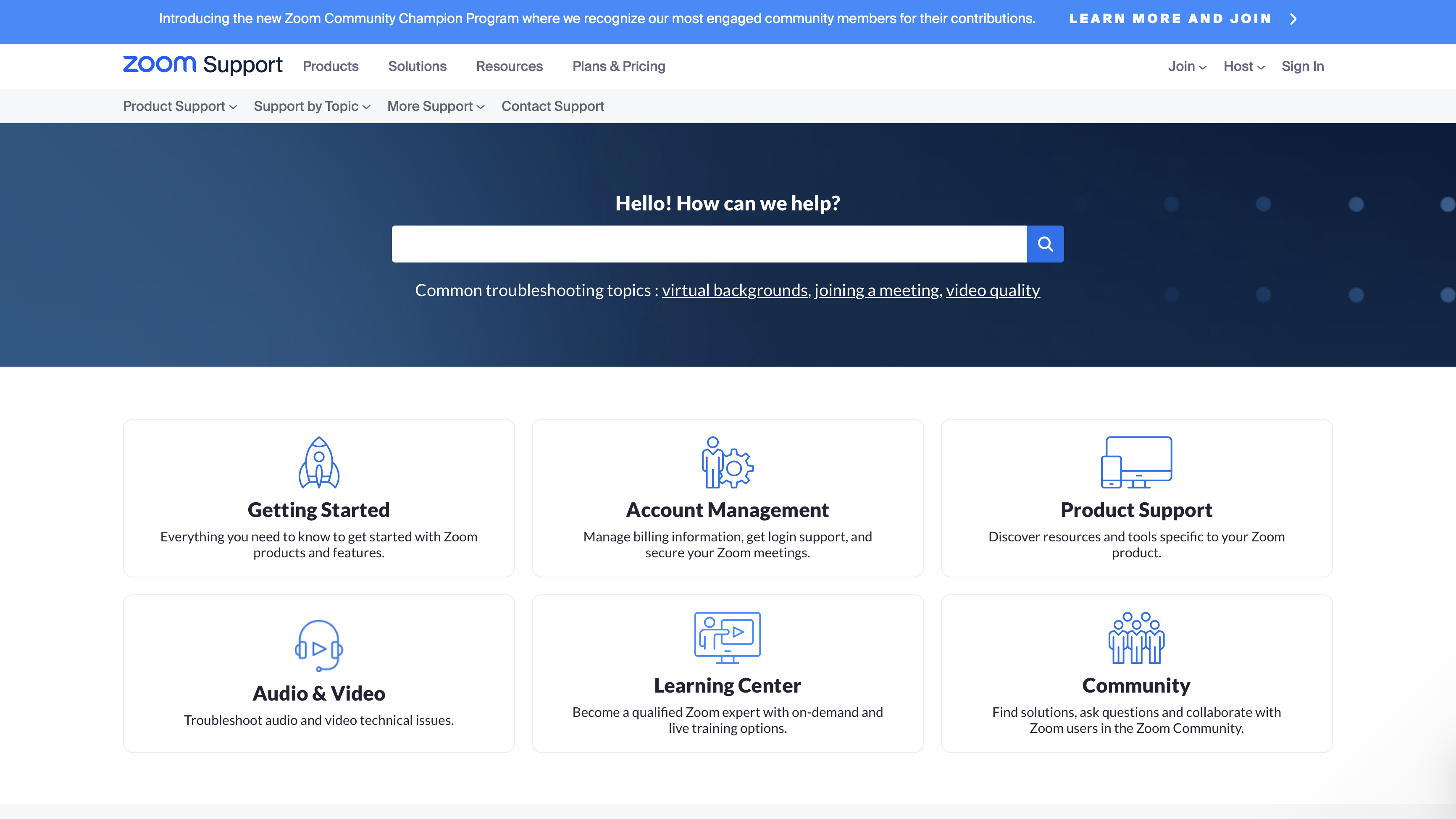
Support is limited with Zoom’s free plan: you only have access to the Help Center, which has easy-to-follow video tutorials and guides. There is also a simple chatbot that connects you to the relevant resources.
The Pro plan offers better support, including live chat and ticketing, while those on the Business and Enterprise plans can also get phone support.
A support ticket’s response time depends on its priority grade. Urgent tickets receive a response in one hour and high priority tickets receive a response in four hours. The normal and low priority tickets get a response within 24 hours.
All the advanced plans have 24/7 support across phone, chat, and web, even on public holidays.
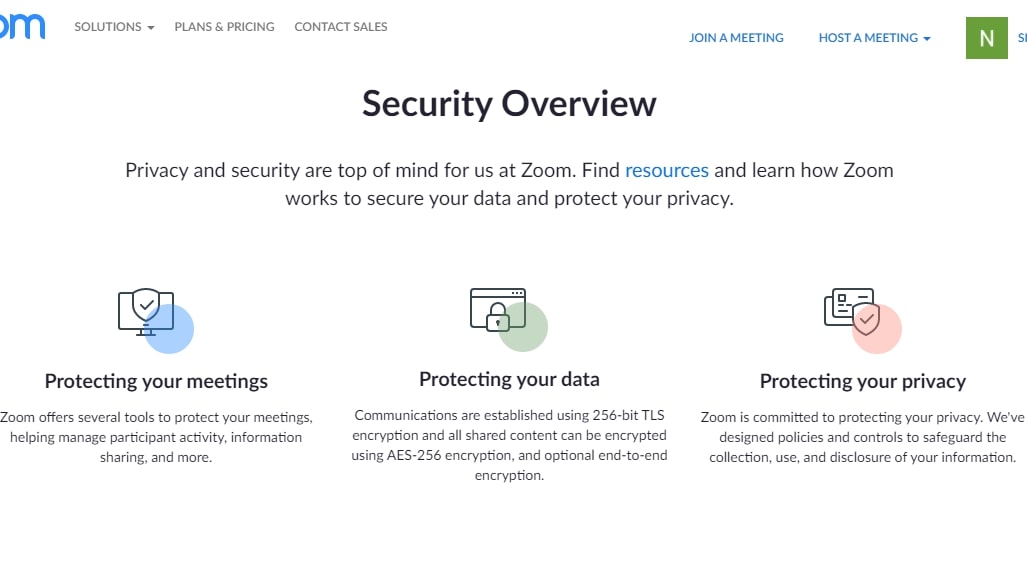
Zoom: Security
Zoom’s security has improved considerably since 2020.
Meetings are now secured with Advanced Encryption Standard (AES) 256, which is practically unbreakable by brute computing force. With AES-256, a one-time encryption key is created and managed on Zoom’s servers for every session. But this means the keys can be compromised if Zoom comes under a cybersecurity attack.
To provide enhanced protection, Zoom has launched end-to-end encryption (E2EE) for both free and paid accounts, and users can opt to enable or disable this feature.
With E2EE turned on, the encrypted keys are created on the participants’ machines, so only they have access to them. This data can’t be accessed by anyone else, including Zoom. However, activating E2EE disables streaming and cloud recording.
Zoom: The competition
There are many video conferencing applications with incredible features, but the best software for you will meet your needs perfectly.
Google Meet, for instance, doesn’t have advanced features like Zoom, but it’s better optimized for smaller teams. As part of Google Workspace, it integrates excellently with other Google applications, like Calendar and Docs.
Then there’s Microsoft Teams from rival company Microsoft, which offers a desktop and mobile app with similar video and chat functionalities, with the benefit of further integration with the company’s other products like OneDrive.
When it comes to security, Webex’s default settings enhance data privacy, so customers aren’t responsible for securing their accounts. Similarly, Lifesize’s meetings are end-to-end encrypted by default. With Zoom, you have to adjust your security settings yourself to avail of additional protection. If security is paramount for you, then Webex and Lifesize won’t disappoint.

Zoom: Final verdict
Zoom is packed with great features and has a clean, user-friendly interface, alongside optimized performance to improve quality and reduce system load, and now offers end-to-end encryption (E2EE) for its meetings.
Although Zoom’s default settings don’t bolster account security and privacy, it makes up for this with its advanced features and ease of use.
Zoom is perfect for businesses with rigorous video conferencing needs. But if you only require simple features, then a quick setup web app, like Google Meet, will be more convenient. With a 60-minute limit on meetings and features like screen share, whiteboard, and virtual background, Meet’s free plan is perfect for basic use.
Christian is a freelance writer and content project manager with 6+ years' experience writing and leading teams in finance and technology for some of the world's largest online publishers, including TechRadar and Tom's Guide.

